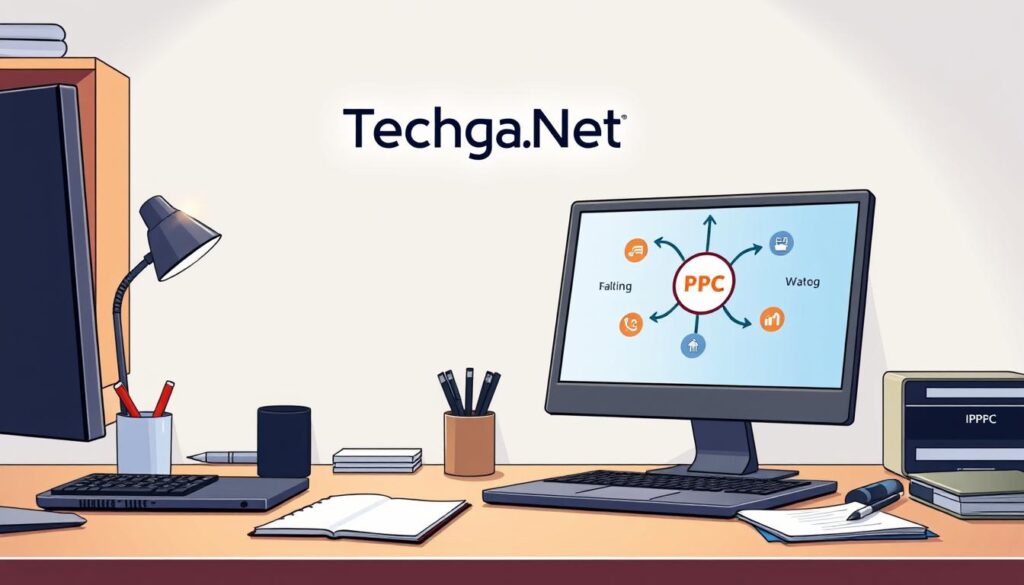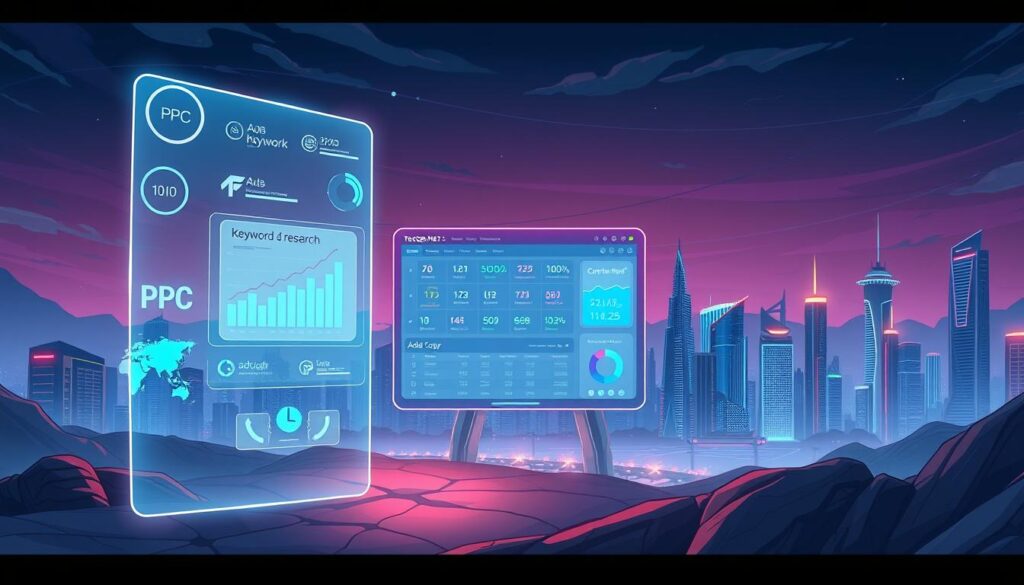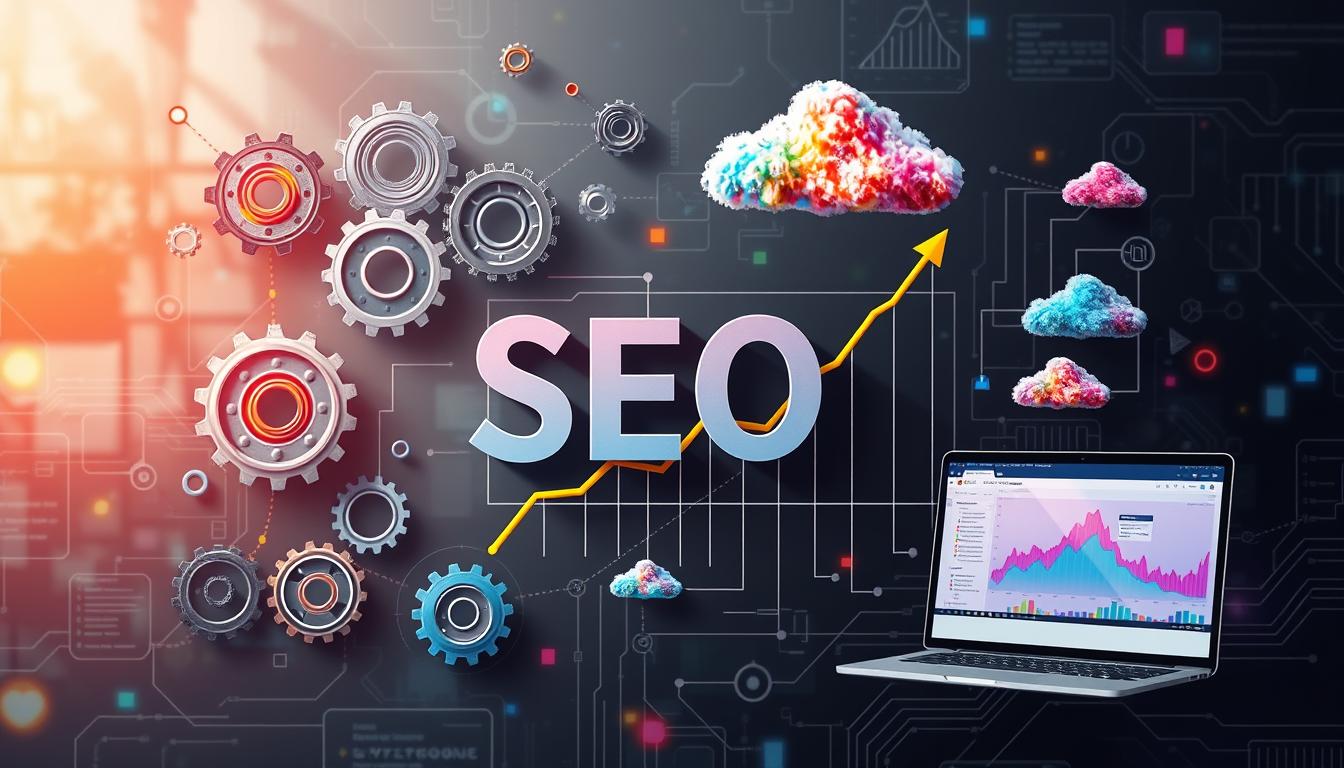In today’s competitive market, businesses need strategies that deliver quick results. PPC (Pay-Per-Click) is a powerful tool that drives immediate traffic to your website. By bidding on relevant keywords, you can ensure your ads appear at the top of search engine results, capturing user attention instantly.
Platforms like Google Ads and Facebook allow advertisers to target specific audiences based on demographics, interests, and behaviors. This precision ensures your ads reach the right people, maximizing your return on investment. With PPC, you only pay when someone clicks on your ad, making it a cost-effective solution for businesses of all sizes.
As we look ahead to ecommerce trends in 2025, PPC will play a crucial role in driving growth. Its ability to generate measurable results, such as clicks and conversions, makes it an essential part of any marketing strategy. Whether you’re a small business or a large enterprise, leveraging PPC can help you stay ahead of the competition.
Key Takeaways
- PPC delivers immediate traffic by bidding on keywords.
- Google Ads and Facebook offer precise audience targeting.
- You only pay when users click on your ad, ensuring cost-effectiveness.
- PPC is essential for ecommerce growth in 2025.
- Trackable metrics like clicks and conversions make PPC measurable.
Ecommerce Development in 2025: Trends and Technologies
By 2025, ecommerce will be transformed by innovative strategies and cutting-edge tools. Businesses must adapt to stay competitive in this rapidly evolving landscape. Let’s explore the key trends and technologies shaping the future of ecommerce.
Key Ecommerce Trends Shaping the Future
Mobile commerce is leading the charge, with more users shopping on their devices. Omnichannel strategies are also gaining traction, offering seamless experiences across platforms. Personalized shopping is another major trend, driven by data analytics and AI.
These trends are not just about convenience. They’re about creating deeper connections with customers. For example, personalized recommendations can boost engagement and loyalty. Businesses that embrace these trends will thrive in the years ahead.
Innovative Technologies Driving Growth
Artificial intelligence is revolutionizing ecommerce. AI-driven recommendations and chatbots are enhancing customer experiences. Blockchain technology is also making waves, reducing fraud and simplifying cross-border transactions.
PPC campaigns play a crucial role in supporting these innovations. Platforms like Google Ads and Facebook use advanced algorithms to target the right audience. This ensures businesses get the most out of their marketing efforts.
As we look to 2025, these technologies will continue to drive growth. Businesses that leverage them effectively will stay ahead of the curve. The future of ecommerce is bright, and the time to prepare is now.
The Impact of PPC on Business Growth in the United States
Businesses across the U.S. are leveraging PPC to achieve rapid growth and measurable success. This powerful tool allows companies to target high-intent audiences, ensuring their ads appear at the top of search engine results. With PPC, businesses can see immediate returns on investment, making it a cornerstone of modern marketing strategies.

ROI and Cost-Effectiveness in PPC
One of the biggest advantages of PPC is its cost-effectiveness. On average, businesses earn $2 for every $1 spent on PPC. This high ROI is achieved through precise targeting and the pay-per-click model, where you only pay when someone interacts with your ad.
Compared to traditional methods, PPC offers better control over your budget. You can set daily limits and adjust bids based on performance. For example, Google Ads uses an auction system to determine ad placement. By optimizing your bids, you can maximize visibility while minimizing costs.
Achieving Quick Results with Measurable Campaigns
PPC campaigns deliver fast, measurable outcomes. With real-time analytics, advertisers can track clicks, conversions, and other key metrics. This data allows for quick adjustments, ensuring campaigns remain effective and aligned with business goals.
Success stories from U.S.-based businesses highlight the power of PPC. For instance, a local retailer saw a 30% increase in website traffic within weeks of launching a targeted campaign. Such results demonstrate how PPC can drive growth and support broader marketing objectives.
| Metric | PPC Performance |
|---|---|
| Average ROI | $2 for every $1 spent |
| Click-Through Rate (CTR) | 1.91% (Search Ads) |
| Conversion Rate | 2%-5% (Industry Average) |
| Cost Per Click (CPC) | $2.69 (U.S. Average) |
By leveraging tools like Google Analytics, businesses can gain deeper insights into campaign performance. This data-driven approach ensures continuous optimization, leading to sustained growth. To learn more about the benefits of PPC, visit our comprehensive guide.
online advertising and pay-per-click campaigns
Effective digital strategies are essential for businesses aiming to maximize their reach and ROI. One of the most powerful tools available is PPC, a model where advertisers pay only when users interact with their ads. This approach ensures cost-efficiency while delivering measurable results.
Unlike traditional methods, PPC allows precise targeting. Ads appear based on user searches, behaviors, and demographics. Platforms like Google Ads and social media networks use advanced algorithms to serve ads to the right audience. This maximizes the chances of conversions and minimizes wasted spend.
Search ads are a core component of PPC. They appear at the top of search engine results, capturing high-intent users. Display ads, on the other hand, focus on visual engagement across websites. Social media placements add another layer, leveraging user interests and interactions to drive traffic.
Landing pages and ad copy play a crucial role in PPC success. A well-optimized landing page ensures users take the desired action, whether it’s making a purchase or signing up. Similarly, compelling ad copy grabs attention and encourages clicks.
By integrating these elements, businesses can create seamless campaigns across multiple platforms. This synergy ensures consistent messaging and maximizes impact. For a deeper dive into PPC strategies, explore our comprehensive guide.
PPC Strategy and Campaign Planning for Success
Crafting a successful PPC strategy starts with understanding your audience and setting clear goals. A well-planned campaign ensures you reach the right people while staying within budget. Let’s explore the key steps to create a winning strategy.

Defining Your Target Audience
Knowing your audience is the foundation of any effective PPC campaign. Start by analyzing demographic data like age, location, and income. Behavioral insights, such as browsing habits and purchase history, can further refine your targeting.
Platforms like Google Ads and social media channels offer tools to segment your audience. For example, you can target users who’ve visited your website or shown interest in similar products. This precision ensures your ads resonate with the right people.
“The better you understand your audience, the more impactful your PPC efforts will be.”
Setting a Realistic Budget and Goals
A clear budget and measurable goals are essential for PPC success. Begin by determining how much you’re willing to spend daily or monthly. Platforms like Google Ads allow you to set limits, ensuring you stay on track.
Next, define your goals. Are you aiming for more website traffic, leads, or sales? Use KPIs like click-through rates and conversions to measure progress. For instance, a small business might aim for a 5% increase in conversions within three months.
- Research and define your audience using demographic and behavioral data.
- Set clear, measurable goals like increased traffic or higher sales.
- Allocate a budget that aligns with your objectives and adjust bids as needed.
By focusing on these pillars—audience targeting and budget planning—you can create a PPC strategy that delivers both immediate results and long-term growth. Start today and watch your business thrive.
Leveraging Search Engines and Platforms: Google Ads, Facebook, and More
To maximize reach and engagement, businesses must harness the power of multiple platforms for their PPC efforts. Each platform offers unique features that can enhance your marketing strategy. Let’s explore how to effectively use these tools to drive results.

Google Ads Fundamentals and Best Practices
Google Ads is a cornerstone of PPC strategies, handling over 3.5 billion search queries daily. Its vast reach makes it a powerful tool for businesses. To get started, focus on keyword bidding, ad rank, and Quality Score. These elements determine your ad’s visibility and cost.
Optimizing your ads for search engine results and partner sites is crucial. Use long-tail keywords for higher conversion rates. Google’s Display Network spans 98% of the web, offering unmatched exposure. With Smart Bidding, you can automate bid adjustments for better performance.
Exploring Social Media Advertising Options
Social media platforms like Facebook and Instagram complement search engine campaigns. Facebook’s targeting capabilities allow you to create “lookalike audiences” based on existing customer data. This precision ensures your ads resonate with the right users.
Different ad formats—text, image, and video—serve unique purposes. Video ads, for instance, have an engagement rate of 6.01% on Facebook. By combining these formats, you can create a dynamic campaign that captures attention and drives conversions.
A multi-platform approach increases overall reach and conversion potential. Use analytics tools to track performance and fine-tune your strategy. This ensures your campaigns remain effective and aligned with your goals.
Advanced Techniques in PPC: Keyword Research, Bid Management, and Ad Copy
Mastering advanced PPC techniques can significantly enhance your marketing efforts. These strategies go beyond the basics, focusing on precision and optimization. Let’s explore how to elevate your campaigns with effective keyword research, bid management, and compelling ad copy.

Effective Keyword Research Strategies
Keyword research is the backbone of any successful PPC campaign. Start by identifying high-value terms that align with your audience’s search intent. Tools like Google Keyword Planner and Ahrefs provide insights into search volume and competition.
Long-tail keywords often yield higher conversion rates due to their specificity. For example, instead of targeting “shoes,” consider “women’s running shoes under $50.” This approach reduces competition and attracts more qualified traffic.
Regularly review keyword performance to spot trends. Remove underperforming terms and add new ones based on evolving search behavior. This ensures your campaigns remain relevant and effective.
Optimizing Ad Copy and Bidding Techniques
Crafting persuasive ad copy is essential for driving clicks and conversions. Focus on clear, compelling messages that resonate with your audience. Use emotional triggers and strong calls to action to encourage immediate responses.
Bid management is another critical aspect. Google’s auction system rewards ads with higher Quality Scores, leading to better placements at lower costs. Use Smart Bidding to automate adjustments based on real-time data.
Split testing different ad components, such as headlines and images, can improve performance. Run tests for at least two weeks to gather meaningful data. This allows you to refine your approach and maximize results.
| Technique | Benefit |
|---|---|
| Keyword Research | Identifies high-value terms for targeted traffic |
| Bid Management | Optimizes ad spend for better ROI |
| Ad Copy Optimization | Increases click-through and conversion rates |
| Split Testing | Refines ad components for improved performance |
By leveraging these advanced techniques, you can stay ahead in the competitive PPC landscape. For more insights on optimizing your campaigns, explore our comprehensive guide.
Emerging Opportunities: Social Media and Video Ads in Ecommerce
Social media platforms are reshaping how brands connect with audiences, offering fresh ways to boost ecommerce engagement. In 2025, short-form video and interactive content will dominate, capturing attention in busy digital environments. Platforms like TikTok and Instagram are leading this shift, providing unique opportunities for brands to thrive.

Leveraging TikTok and Instagram for Engagement
TikTok has become a powerhouse for brands targeting younger audiences. Its in-feed ads blend seamlessly with user-generated content, making them less intrusive and more engaging. For example, a fashion brand saw a 20% increase in sales after running a TikTok campaign featuring user testimonials.
Instagram, with its Stories and Reels, offers another avenue for creative storytelling. Shoppable posts allow users to purchase directly from the platform, streamlining the buying process. These features make Instagram a valuable tool for driving both traffic and conversions.
Innovative Video Ad Formats to Capture Attention
Video ads are evolving to meet the demands of today’s fast-paced digital world. Vertical videos, optimized for mobile viewing, are gaining traction. Platforms like YouTube are experimenting with interactive formats, such as shoppable videos, where users can click to buy products directly from the ad.
Interactive content, like polls and quizzes, also enhances engagement. For instance, a beauty brand used Instagram Stories to let users vote on new product shades, resulting in a 15% boost in pre-orders. These formats not only capture attention but also drive measurable results.
| Platform | Ad Format | Engagement Rate |
|---|---|---|
| TikTok | In-Feed Ads | 6.5% |
| Shoppable Posts | 4.8% | |
| YouTube | Interactive Videos | 5.2% |
By embracing these emerging opportunities, brands can complement their overall strategy with a creative edge. Social media and video ads are not just trends—they’re essential tools for staying competitive in the evolving ecommerce landscape.
Tools and Best Practices for Tracking and Optimizing PPC Performance
Tracking and optimizing PPC performance is essential for achieving measurable success. By leveraging the right tools and strategies, businesses can refine their campaigns for better results. Let’s explore how to make data-driven decisions and continuously improve your efforts.
Utilizing Analytics Tools for Data-Driven Decisions
Analytics tools like Google Analytics provide real-time insights into campaign performance. Metrics such as click-through rate (CTR), conversion rate, and ROI help identify what’s working and what needs adjustment. For example, a high CTR with low conversions may indicate a need to optimize your landing page.
Automated reports and alerts can save time by highlighting key trends. Tools like SEMrush and Optmyzr offer advanced features for budget control and keyword tracking. These platforms enable advertisers to make informed decisions quickly.
“Data is the foundation of effective PPC optimization. Without it, you’re just guessing.”
Continuous Campaign Optimization Strategies
Continuous optimization ensures your campaigns remain effective over time. Start by adjusting bids based on performance data. For instance, increase bids for high-performing keywords and reduce them for underperforming ones.
Refreshing ad creatives is another key strategy. Test different headlines, images, and calls to action to see what resonates most with your audience. Split testing can reveal valuable insights for improving engagement.
Integrating performance analysis with overall marketing efforts is crucial. Use CRM tools to target lookalike audiences and enhance ad relevance. This approach ensures your campaigns align with broader business goals.
| Metric | Tool | Benefit |
|---|---|---|
| CTR | Google Analytics | Measures ad engagement |
| Conversion Rate | SEMrush | Tracks user actions |
| ROI | Optmyzr | Evaluates campaign profitability |
| Keyword Performance | SpyFu | Identifies high-value terms |
By leveraging these tools and strategies, you can create a responsive and successful PPC strategy. Start optimizing today and watch your performance soar.
Conclusion
Effective PPC strategies are essential for driving ecommerce growth and achieving measurable results. By leveraging tools like Google Ads, businesses can target the right audience, optimize their budget, and see quick returns. The ability to track metrics like clicks and conversions ensures campaigns remain aligned with goals.
As we look ahead, emerging trends in digital marketing will shape the future of PPC. Integrating innovative techniques, such as advanced keyword research and bid management, will be key to staying competitive. Platforms like social media and video ads offer new opportunities to engage audiences creatively.
To succeed, businesses must continuously refine their strategies using modern tools. Embrace these approaches to unlock lasting growth and stay ahead in the evolving digital landscape. Start optimizing today and see the impact on your results.



